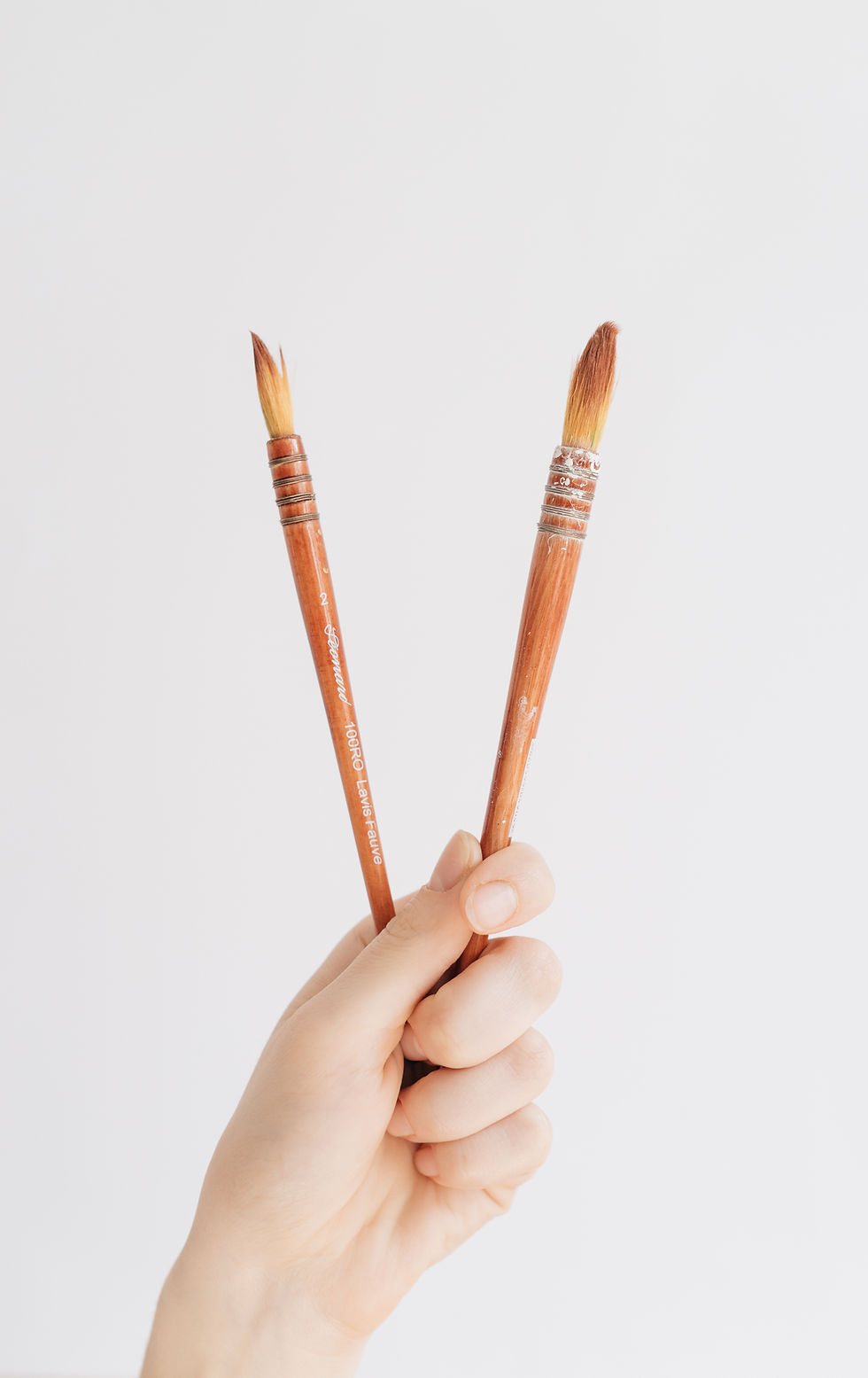Fantastic? or Failure :/
- Jenny Gilchrist
- Jun 27, 2017
- 3 min read
So if you're human AND you paint, you probably have some failed paintings. This can be for any number of reasons but I'll give you some of mine. * you were interrupted and never finished * you forgot to make a thumbnail sketch and so it was doomed from the start. * you used the wrong colours, too many colours, too few colours, or forgot to test your colours.
* your design/idea was pretty awful
* you overworked a section or underworked a section.
* you forgot the rule of thirds, and other composition essentials.
* bla...bla.... bla..... and the most common - It JUST didn't work out the way you thought it would.
If you have never experienced any of these problems well....you're probably lying.

So, what do you do when you have an unlovely collection of failed paintings? Do you A) persist and work at it slavishly until your brush is worn out? B) feel positive that you can get over the hump and put it aside for a bit of consideration? C) throw your hands in the air, stomp off and go and have a wine. (Yeah, that's me too!)
First rule of failures:
1. Never, ever throw a painting out unless it is absolutely without ANY redeeming feature whatsoever. I mean it's an absolute train wreck. No nice colours, can't recognise anything in it, ruined paper....that type of thing. Then.... the other rules....
2. For the above...turn it into little gift cards, even if it's just 5 square centimetres of pretty washed colour.
3. Set your painting aside to think about it for a while. Out of sight is good, it means you'll come back with a fresh eye, and probably won't be as bad as you thought.
4. Don't leave it too long, and always attach the thumbnail sketch and a list of the colours you used to the back so you can get back to it with all the info. If you leave it years, you might find the sizing has gone in the paper. This results in blotchy washes. (Note to Jenny....) 5. When you come back to it Set it back from you so you can see it from a distance.

6. Write yourself a list - what does it need? - tone? colour? a focal point? Does it need something more interesting? Warmth? cool? lines softened, some detail? Work out what you think the problem is and write a quick plan> Colours, Order in which to paint, What to paint, where to paint it, how dark to paint it.
7. Execute the plan and ONLY the plan. Then stand back again and look at your picture. Finished? At this stage it is critical NOT to keep adding things. You have to face it, it may just be that it's not a very good picture. The painting above was almost finished. (The roadscape.) It just lacked something. I didn't kow what. It was a bit messy, a bit cold, and poorly designed with the road leading out of the picture. It needed a focal point, Here's my additions....

a) warmed up the foreground b) added mountains for a centre of attention and also for design so the road looked like it was leading there.
c) added some purple into the midground grass for balance. d) added some more vertical poles in the midground and some grasses in the foreground. e) soften some edges of the cloud on the top left.
It's ok, it's not one of my best, but it's better than it was. I quite like it. Not all your paintings will recover....not all mine do. Learn from your mistakes. But mostly, put the failures away for another day, go back to them with a fresh eye and make a plan. You might be surprised. If you're not, go and have a wine. :D









Comments